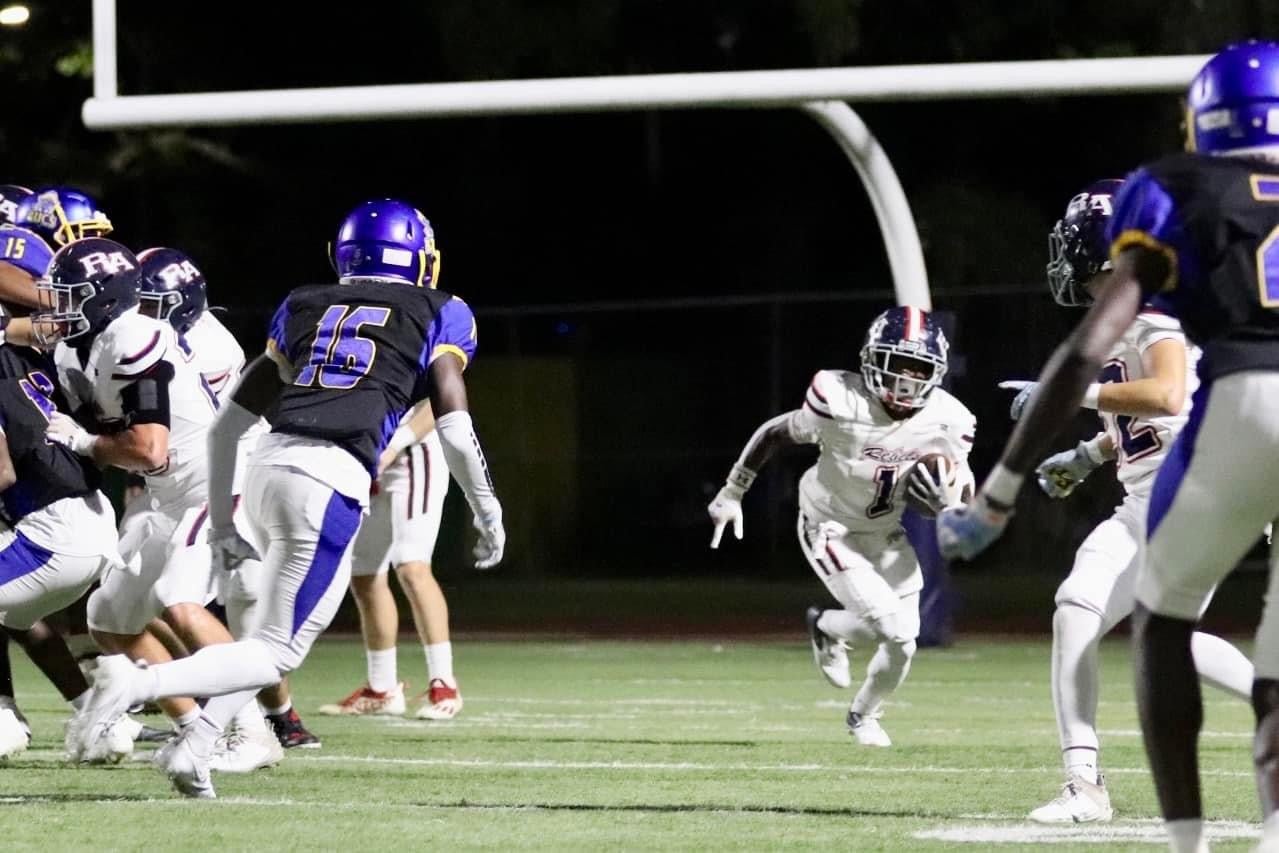L’Observateur Outdoor reports, information and notices
Published 12:00 am Friday, August 19, 2005
BOWHUNTER EDUCATION PROGRAM SET
The Louisiana Department of Wildlife and Fisheries along with local bow hunter instructors will be sponsoring a NBEF bow hunter education course. Bow hunters are required to have completed this course to hunt on federal lands such as Mandalay, or Tensas National Wildlife refuges. These will be the only two courses available in this area, so be there if you intend on hunting these areas. Also, if you want to become a knowledgeable bow hunter, this is the course for you. The course is free and open to the public. Items you will need to bring include: bow and arrows, bug repellant, rubber boots, rain gear and something to write with. NOTE: THESE TWO COURSES ARE SCATTERED IN SUCH A WAY, AS THE 7 & 7 WORKERS WILL CATCH ONE OF THESE COURSES. Courses are both at the Terrebonne Parish sheriff’s rifle range on savanna road in Houma. Dates are Aug. 12-13 from 6 p.m. until 10 p.m. on Friday and 8 a.m. till noon on Saturday. The second course is set for September 16 &18, 6 p.m. till 10 p.m. on Friday and 8 a.m. till noon on Sunday.
WHITE LAKE WETLANDS CONSERVATION AREA TEAL SEASON LOTTERY ANNOUNCED
The Louisiana Department of Wildlife and Fisheries (LDWF) is accepting applications for lottery teal hunts on the White Lake Wetlands Conservation Area. Available dates are Saturday, Sep. 17; Sunday, Sep. 18; Tuesday, Sep. 20; Thursday, Sep. 22; Saturday, Sep. 24; and Sunday, Sep. 25.
A total of two applications per hunter, each one for separate dates, will be accepted. Hunters will not be allowed to submit more than one application per hunting date or more than two applications for the season, or they will be disqualified.
Persons 18 years of age or older may now send applications, available on the LDWF Web site (www.wlf.louisiana.gov) and at LDWF headquarters and regional offices, to the Department of Wildlife and Fisheries, Attention: White Lake Teal Hunt, P.O. Box 98000, Baton Rouge, LA 70898. Applications must be received by close of business on Aug. 17, 2005. A $5 administration fee in the form of a check or money order made payable to the Louisiana Department of Wildlife and Fisheries must accompany each application. Applications without a correct driver’s license number will not be processed.
Successful applicants will be allowed to bring no more than one guest. All hunters must have appropriate licenses, including a basic hunting license (or Louisiana Sportsman’s Paradise license), migratory waterfowl conservation license, federal duck stamp, and HIP permit.
Successful applicants will be notified and required to submit an additional check or money order for $200. In the event that a hunter is unable to participate on the date selected, he or she may transfer his or her permit to a qualified hunter of his or her choice, as long as the total number of hunts does not exceed two for the 2005 teal season. Transfers must be in writing and presented to the Hunt Coordinator on the morning of the hunt. Questions regarding the White Lake Wetlands Conservation Area lottery teal hunt should be directed to Wayne Sweeney at 337-526-9900.
LOUISIANA FALL SHRIMP SEASON OPENS IN ZONES 1, 3 AND REMAINING PORTION OF ZONE 2
The fall inshore shrimp season will open in Shrimp Management Zone 1, 3 and the remaining portion of Zone 2 currently closed to shrimping at official sunrise Monday, Aug. 15, 2005. The Louisiana Wildlife and Fisheries Commission approved season dates at its Aug. 4 meeting, based upon recommendations presented by Louisiana Department of Wildlife and Fisheries (LDWF) Marine Fisheries Division staff.
The closing date set by the commission for these waters is official sunset Tuesday, Dec. 20, 2005 except for the open waters of Breton and Chandeleur Sounds as described by the double-rig line (LA R.S.56:495.1(A)2) which will remain open until 6 a.m. March 31, 2006.
Zone 1 includes Louisiana waters from the Mississippi-Louisiana state line to the eastern shore of South Pass of the Mississippi River. Zone 3 extends from the western shore of Vermilion Bay and Southwest Pass at Marsh Island to the Louisiana-Texas state line. The remaining portion of Zone 2 which will be opened to shrimping includes those waters from the Atchafalya River Ship Channel at Eugene Island as delineated by the Channel red buoy line to the western shore of Vermilion Bay and Southwest Pass at Marsh Island.
Acting on authority provided to LDWF Secretary Dwight Landreneau at the July 7 commission meeting, Secretary Landreneau opened a portion of Zone 2 from the eastern shore of South Pass of the Mississippi River to the Atchafalya River Ship Channel at Eugene Island as delineated by the Channel red buoy line on Aug. 1, 2005 at official sunrise. These waters will also close to shrimping at official sunset Dec. 20, 2005.
The commission also authorized Secretary Landreneau to change the closing dates of the 2005 fall shrimp season if biological and technical data indicate a need to do so or if enforcement problems develop and to close and reopen all or parts of state inside and outside waters if significant numbers of small white shrimp are found in these waters.
According to LDWF trip ticket report data, Louisiana commercial white shrimp landings in 2004 totaled approximately 73.5 million pounds (heads-on weight), the second highest white shrimp landings year on record, and were valued at $96.2 million.
L.D.W.F. ADVISES BOATERS ON LAKE PONTCHARTRAIN AND CONNECTING WATERWAYS TO REMAIN ALERT FOR MANATEES IN AREA
The Louisiana Department of Wildlife and Fisheries (LDWF) is advising fishermen and boaters on Lake Pontchartrain and connecting waterways to exercise caution if individual or groups of manatees are encountered.
Marine biologists with the Audubon Nature Institute, working in tandem with LDWF, have confirmed sightings of manatees in Lake Pontchartrain. Follow up aerial surveys indicate that the manatees appear to have dispersed throughout the Lake Pontchartrain basin.
The manatee is a slow moving mammal that can grow to over 10 feet in length and weigh over 1,000 pounds. They eat seagrass, water hyacinth and algae. Manatees prefer warm water and are found mainly in Florida’s inland waters and coastal zones. As a federally-protected endangered species, manatees should not be handled, fed or watered.
Because of their grayish-brown color, manatees are difficult to see in the water and thus subject to injury from boat collisions. Area boaters are urged to remain observant for the species through early October when they will migrate back to Gulf waters. Boaters should not approach manatees and make every effort to navigate around the creatures to avoid contact.
LDWF is interested in collecting data on the numbers and movement of manatees while they inhabit the state’s inland waterways. The public is urged to assist in this effort by reporting any manatee sighting – including live, injured or dead manatees – to 1-800-442-2511 or 504-378-2580.
L.W.F.C. SETS TENTATIVE MIGRATORY WATERFOWL SEASONS
The Louisiana Wildlife and Fisheries Commission (LWFC) voted to tentatively adopt proposed season dates, bag limits and shooting hours for the 2005-06 migratory waterfowl season at their Aug. 4 meeting. The dates will be ratified by a declaration of emergency from the commission, unless the U.S. Fish and Wildlife Service should mandate unanticipated changes.
After the LWFC listened to public comments and Louisiana Department of Wildlife and Fisheries personnel on proposed duck season dates and bag limits, it was concluded that a 60-day season will be adopted for ducks and coots, except canvasbacks. In the West Zone, the first segment will open on Nov. 12 and close on Dec. 4. The second segment will open on Dec. 17 and run until Jan. 22. In the East Zone, the first segment will go from Nov. 19 to Dec. 4. The second segment will last from Dec. 17 until Jan. 29.
This year’s waterfowl season structure is similar to last year’s with a few exceptions: a full 60-day season for pintails, the scaup bag limit has been reduced to two and the white-fronted goose season has been shortened by two weeks.
Canvasback season will last for 30 days this season and run from Dec. 17 through Jan. 15 statewide.
Youth waterfowl weekend in the west zone is Nov. 5-6 and in the east zone Nov. 12-13.
The daily bag limit on ducks is six and may include no more than four mallards (no more than two of which may be females), one pintail, three mottled ducks, one black duck, two wood ducks, two scaup and two redheads. During the canvasback season and youth hunts, the daily bag is one canvasback. The daily bag limit on coots is 15. In addition to the daily bag limit for ducks, the daily bag limit for mergansers is five, only one of which may be a hooded merganser. The possession limit on ducks, coots and mergansers is twice the daily bag limit.
Light geese and white-fronted geese will have a 72-day statewide season. The first segment will open on Nov. 12 and close on Dec. 4. The second segment will open Dec. 17 and close on Feb. 3. The daily bag limit on light geese is 20, with no possession limit. The daily limit on white-fronted geese is two, with a possession limit of four.
The Statewide Conservation Order for light geese will open on Dec. 5, and the first segment will close on Dec. 16. The second segment will open on Feb. 4 and close on March 12. During this time, only snow, blue and Ross’ geese may be taken and daily bag and possession limits are eliminated. The use of electronic calls and unplugged shotguns is permitted. Shooting hours during the order begins one-half hour before sunrise and extends until one-half hour after sunset.
The special-permit-required Canada goose season will be from Jan. 14-22 statewide, except for a small area in southwest Louisiana. The daily limit for Canada geese is one and the possession limit is two. The special $5 permit may be obtained from any license vendor.
Rails may be taken from Nov. 12 to Jan. 11. For King and Clapper rails, the daily limit is 15 in the aggregate, with a possession limit of 30. Sora and Virginia rails have a daily and possession limit of 25 in the aggregate.
Gallinule season will open on Nov. 12 and close on Jan. 11. Daily bag limit is 15 and possession limit is 30.
Snipe may be taken in the first segment from Nov. 5 to Dec. 7 and from Dec. 17 to Feb. 28 in the second segment, with a daily bag limit of 8 and a possession limit of 16.
Shooting hours for migratory bird hunting, except for the Conservation Order, are one-half hour before sunrise to sunset, except at the Spanish Lake Recreation Area in Iberia Parish where shooting hours, including the Conservation Order, end at 2 p.m.
An extended falconry season for ducks, rails and gallinules will take place from Nov. 5 to Feb. 10.





